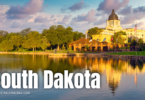Denver is both the capital of Colorado and the county seat of Denver County. It is the most populous city in the state of Colorado, as well. With a picturesque location just east of the front range of the Rocky Mountains, Denver is nicknamed the “mile-high city” because it stands exactly one mile above sea level. It is located in the Mountain Time Zone and is ranked as a Beta World City by the Globalization and World Cities Research Network.
Denver’s current population of a little more than seven hundred thousand makes it the nineteenth most populous city in the United States, and is one of the fastest-growing major metropolitan cities in the country, with a seventeen percent growth in the past nine years. The burgeoning hemp industry is making Denver a more attractive place for new residents and new businesses, as well. U.S. News and World Report ranked Denver as the best city in which to live in the United States in 2016.
The area that is now Denver was inhabited for thousands of years by Native Americans of a variety of western tribes. However, an American town was not established there until 1858, during the Pike’s Peak Gold Rush. At that time, a group of prospectors from Lawrence, Kansas established a mining town there called Montana City. The Denver area was, at the time, part of the western territory of Kansas. Montana City did not last long and was abandoned by the next summer in favor of the more modern and convenient towns of Auraria and St. Charles City.
However, even before Montana City was abandoned, there were other efforts going on to establish some kind of permanent town there. In November of 1858, General William Larimer and Captain Jonathan Cox, who were both Kansas land speculators, staked off a claim of land near Montana City on the townsite of St. Charles. Larimer changed the name of St. Charles to Denver City in a move to gain the attention and favor of Kansas governor James W. Denver. It was Larimer’s hope that the new name of the town would prompt the governor to make Denver the county seat of Arapaho County. However, Governor Denver had already resigned from office when Larimer did this, unbeknownst to Larimer.
Regardless of Denver’s status as a county seat, it was still in a convenient location, being easily accessible to the seasonal mining camps of Cheyenne and Arapaho. These mining camps are now part of Denver and are the location of Confluence Park, near the downtown area. With his county seat hopes dashed, Larimer sold parcels of land in the new town to merchants, miners, and pioneers, intending to make the town into a major city. He succeeded remarkably well in that venture.
Denver soon became a huge frontier town with a thriving economy that was based on catering to the needs of local miners. The new town had everything a miner could desire, including gambling joints, saloons, hotels, merchant stores of all kinds, as well as a robust market in livestock and goods trading. In May of 1859, the town’s residents donated fifty-three lots of land to the Leavenworth and Pike’s Peak Express so that they could secure an overland wagon route to the town….the first in the region. The wagon route offered daily service in the transport of people, mail, freight packages, and gold. The route cut the travel time from the nearest major city in the east to Denver from twelve days to six, which made it an attractive travel option for anyone traveling west for prospecting or pioneering. Denver became even more of an economic success in 1863 when Western Union chose it as the location of its western regional headquarters. This helped Denver’s economy dominate that of other nearby towns and smaller cities.
In 1861, Denver became part of the newly established Colorado Territory, which was partitioned off from the Kansas Territory. Denver was incorporated as a city that same year and served as the county seat of the newly formed Arapahoe County from that time until 1902. It became the acting capital of the territory in 1867 and was chosen to be the permanent state capital in 1881 (Colorado had become a state in 1876). Upon becoming the state capital, its official name was shortened from Denver City to just plain Denver.
Denver was thriving and looked to continue to do so. However, the decision of the government to bring the nation’s first transcontinental railroad to the city of Cheyenne instead of Denver threatened the city’s prosperity. Cheyenne was a hundred miles away from Denver, which meant Cheyenne would likely attract more residents and businesses once the railroad was built, leaving Denver in the dust, economically speaking. So, the city’s citizens began fundraising to build their own connection to the railroad hub in Cheyenne. They raised over $300,000 in a mere three days, though the efforts stalled before construction could begin. However, some wealthy investors in the town took on the challenge themselves and completed the railroad link to Cheyenne. This ushered in a brand new era of renewed wealth and prosperity for Denver.
With its new railroad link to the rest of the country, Denver became a prosperous center of service and supply for the region, and it flourished. Millionaires came and built mansions, and investors built blocks of businesses, including the posh and famous Tabor Grand Opera House. There were new luxury hotels built there, expensive boutique stores, and rows of fancy homes. Factories were built, and the leaders of the city were successful in coaxing workers from the east to come and work in them. In addition to the elite class, a new middle class also rose up in Denver and became the primary class in town.
Denver continues to thrive today and is just as popular as it once was. In fact, it is one of the best-known cities in the west.




